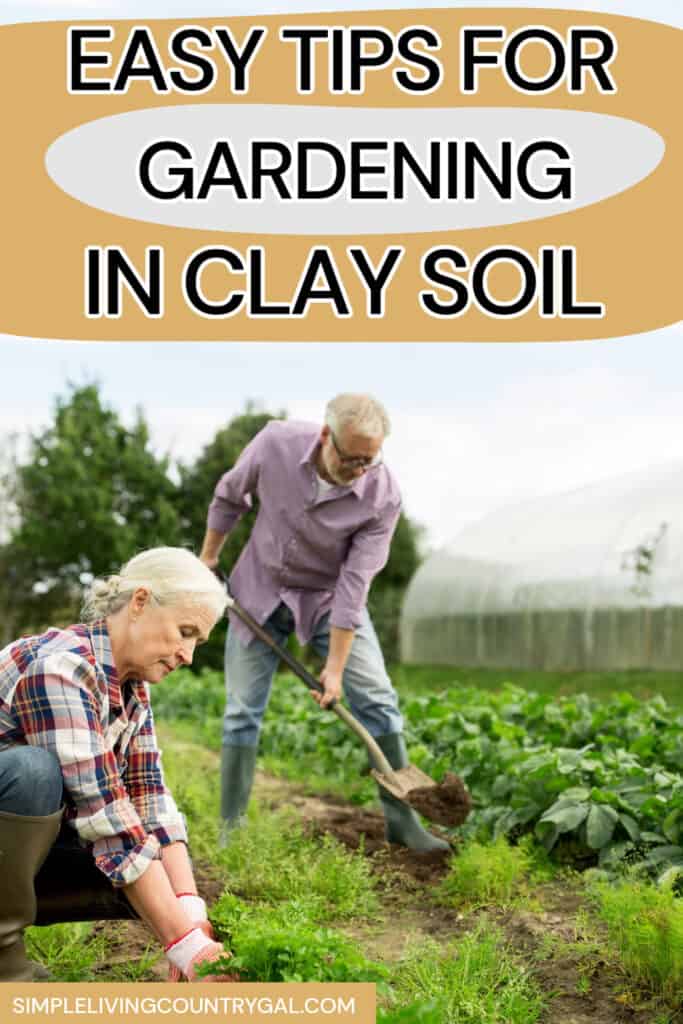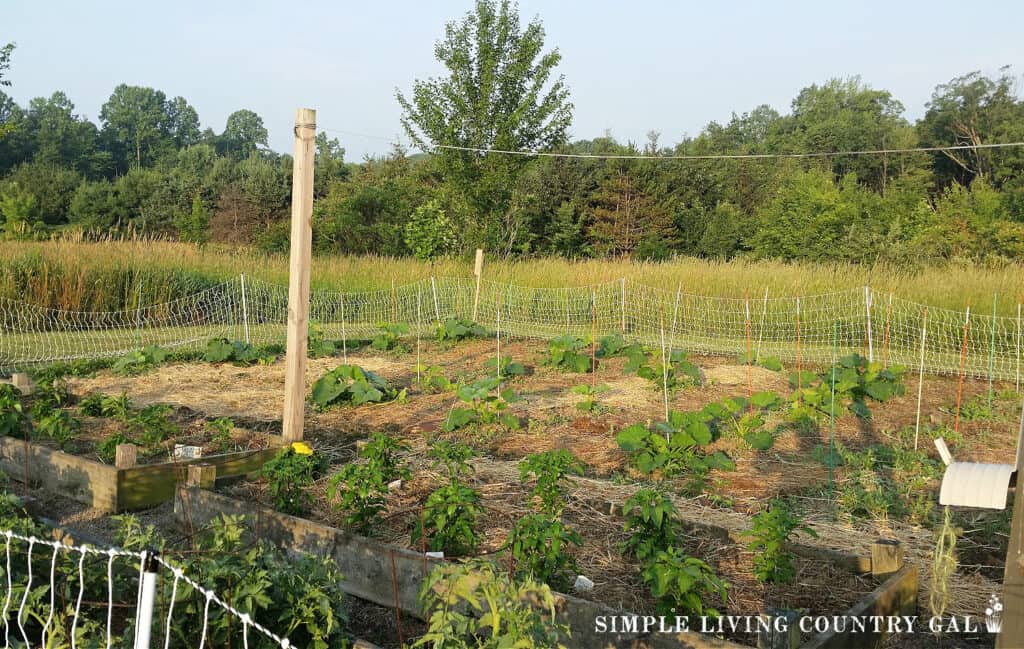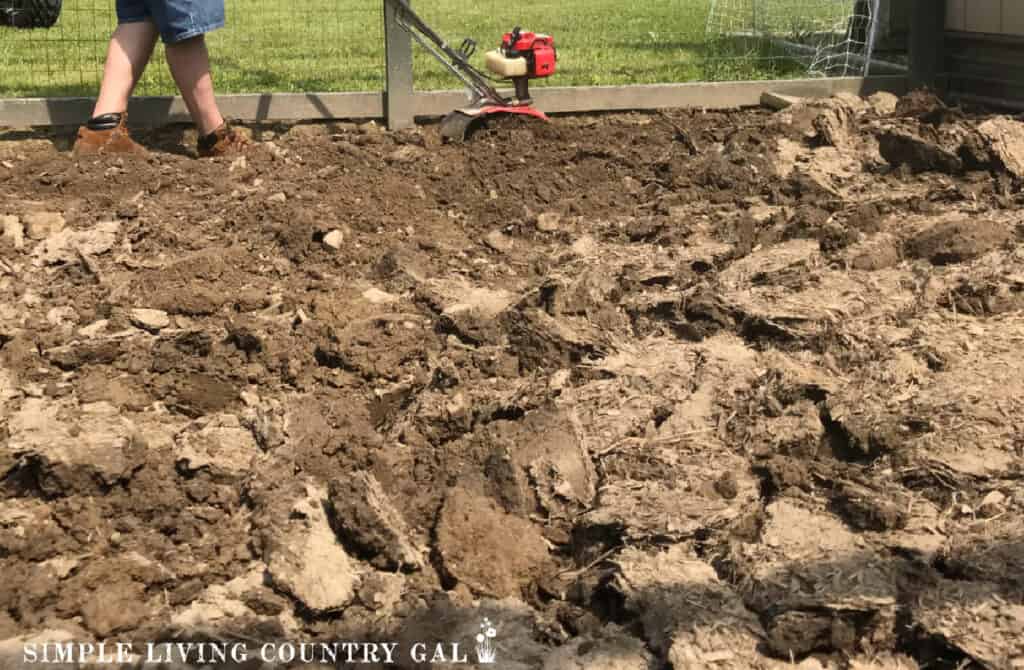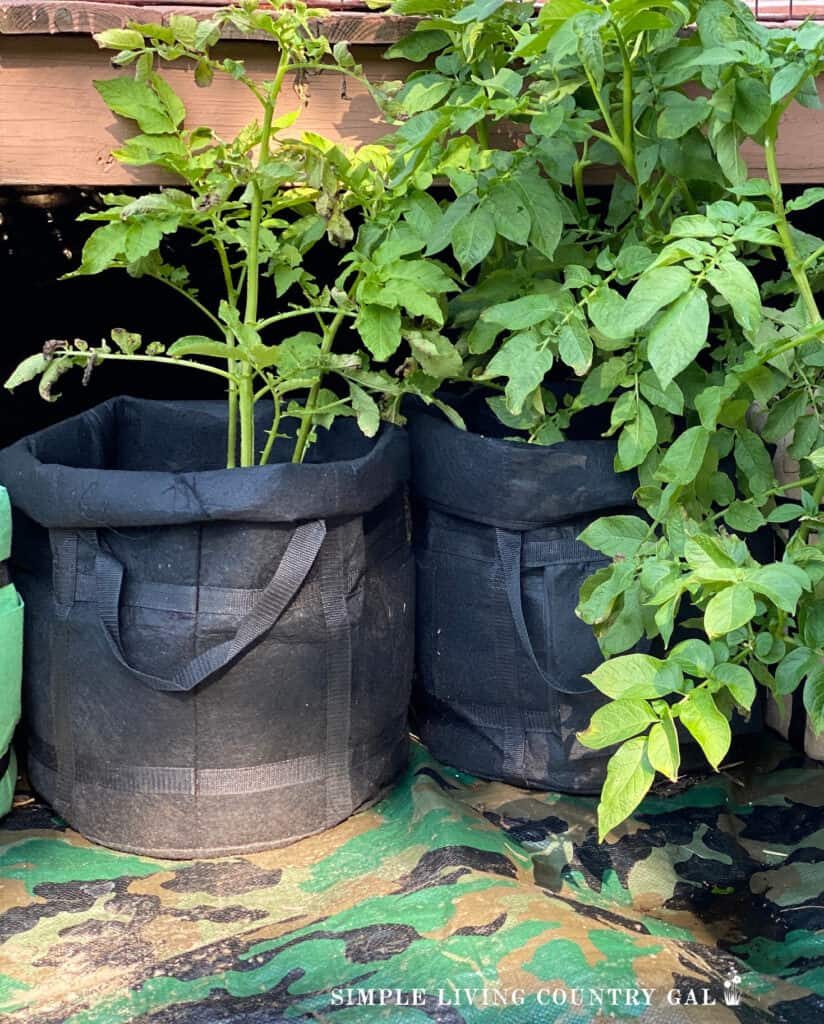Gardening in Clay Soil
If you have less than optimal soil in your backyard, then this guide on gardening in clay soil will give you a few options for which you can try to amend what you have. Yes, there are a few things you can grow in this clumpy ground but your best bet will be fixing the quality so you can grow a bigger variety.
Gardening 101 tips that will give you a garden that will grow all the foods you enjoy by starting with soil that is healthy and easy to grow in. Be sure to get your FREE Fix Your Crappy Clay Soil Checklist below!

When we first moved to our country home, I couldn’t wait to start growing our garden. I have visions of this huge area full of all the veggies we loved to eat with a little bench where I could sit and look over my patch.
When I put my shovel into the ground, I found hard, awful clay soil—the worst I had ever seen. My dream garden would have to wait until my soil was better. That was the bad news, the good news is I was able to transform that soil into my dream garden after all.

What is Clay Soil?
Clay soil is thick, hard soil that is slow to drain, making it very heavy and often difficult to work with. It is heavy because it holds water, which does make it a good place to grow shrubs, allowing roots to anchor firmly in the ground. On the downside because clay soil is so compact due to the water, this means there is little air. If you want to grow vegetables you need both air and water for those plants to thrive.
Why Clay Soil is Difficult to Grow In
Clay soil’s small particles mean that water drains slowly and roots can struggle to penetrate and grow. If you water your plants as you would with normal soil this can lead to overwatering and the risk of root rot. On the other hand, if you water less because the soil is clay this can lead to dry, hard conditions, stunting the plant’s growth.
How to Identify Clay Soil in Your Garden
Clay soil feels lumpy when wet and turns hard when it dries, forming large cracks that can be problematic for plants. It may also look shiny when wet and has a tendency to cling to tools and shoes.

Can any plants grow in clay soil?
Despite its challenges, there are plants that thrive in clay soil. Shrubs like potentilla and perennials such as catmint, Russian sage, and blanket flower all do well.
Amending Clay Soil
If you want to amend your soil for better planting, the best way to do this is to add compost or well-decomposed manure.
- Using a shovel or rake, break up as much clay soil as possible. You can also use a rototiller but be aware that the tines will get caked up needing to be cleaned off often.
- Once you have most of the large clumps broken up you can rake things down into a more even layer.
- Add in shovels of compost or manure spreading the piles out to get most of the area.
- Work it into the soil with a rake or shovel.
- Allow to sit for a few days.
- Add more if needed.
Amending soil with organic matter isn’t a once and done. You will need to do this each spring to ensure you have a good base to plant in.
I have this task on my spring list each year, so I remember to turn and rake our area a few weeks before planting season hits. Having a monthly list is helpful and keeps me on track with chores without getting behind on things.
How long does it take to fix clay soil?
Improving clay soil is a long-term project. While some benefits can be seen in the first year, it’s often after several years of consistent amendment that significant change is noticed. Don’t worry, though—you can still grow things in your soil now. Just know you may not see that robust growth that you were envisioning.
Alternative Gardening Options
If you are worried your garden soil will not give you the harvest you were hoping for this season, you can use a few alternative options this year to expand your harvest a bit.
Smirdx 2 PCS Plant Grow Bag, 15 Gallon Large Heavy Duty Fabric Grow Pot for Durable Breathe Cloth Planting Container for Potato Carrot Onion, Gardening Outdoor


Grow bags
Grow bags are my new favorite way to grow in containers. They are easy to use, can be reused year after year, and you can grow just about any plant or collection of plants inside. Grow bags can be moved around even after they are planted, allowing you to relocate things as needed.

Raised Beds
Raised beds are a great way to garden no matter how bad your soil is. You can build a frame with wood or brick, and fill it with compostable materials as your base. Once done, add on a thick layer of soil, giving you a ready-to-go garden that you can start planting right away.
I have quite a few raised beds and they give me a neater look to our large garden while containing different plants to keep things more organized.
Understanding the nature of your soil so you can take proactive measures to improve it, is all a part of being a backyard gardener. Even if your soil is the worst you have seen you can still transform it into a dream garden that is full of your favorite fruits and vegetables. I hope you found this guide on how to grow in clay soil helpful, be sure to bookmark it so you can use these tips whenever you need to amend your garden soil to grow in.




